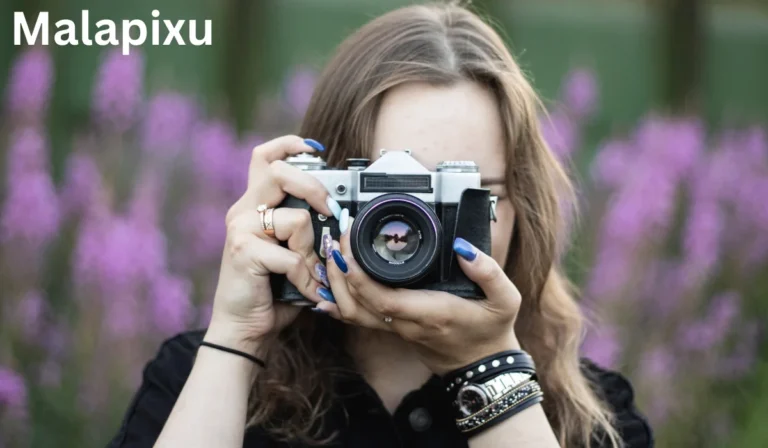Uncuymaza: Weaving Community and Creativity Together
Uncuymaza is more than just a craft; it represents a rich expression of cultural heritage and identity. This traditional weaving technique originates from the indigenous communities of Peru and showcases their artistic skills and deeply ingrained traditions. Each uncuymaza piece carries historical and cultural stories that have been handed down through generations.
As we explore uncuymaza, we’ll examine its origins, cultural significance, and how this art form continues to evolve while maintaining its traditional roots. Join us on a journey into the world of uncuymaza, where every intricate pattern beautifully blends creativity with heritage.
History and Origins of Uncuymaza
The history of uncuymaza is deeply intertwined with Andean culture, originating from the ancient practices of indigenous Peruvian communities. This traditional craft, which dates back centuries, was not merely an artistic pursuit; it served practical purposes in daily life. Items created through uncuymaza were integral to various rituals and ceremonies, reflecting the spiritual beliefs of these communities.
As trade routes expanded across the Andes, the techniques associated with uncuymaza began to spread and evolve. Artisans shared ideas and materials, which contributed to the growth of this intricate craft.
The legacy of uncuymaza highlights the deep connection between nature and community values. Each piece represents not only a fusion of skill and tradition but also tells a unique story of cultural heritage and adaptability throughout history.
Cultural Significance of Uncuymaza
Uncuymaza is a vital part of its community’s cultural heritage, transcending mere craftsmanship to embody rich history, identity, and resilience. Each piece of this traditional craft tells a unique story, preserving local beliefs and customs passed down through generations while honoring the enduring skills and traditions that have shaped these communities.
One of the most remarkable aspects of uncuymaza is its ability to encapsulate cultural heritage within its woven patterns. The designs often depict natural elements such as mountains, rivers, and wildlife, each carrying symbolic meaning in Andean cosmology. For example, the llama, a frequent motif in uncuymaza, represents prosperity and strength, while geometric patterns reflect the interconnectedness of life and the universe.
Uncuymaza is also central to the spiritual practices of the Andean people. These textiles are used in various rituals and ceremonies, including weddings, festivals, and religious observances, where they are believed to provide protection and blessings. The act of weaving itself is considered sacred, with artisans often performing rituals and prayers before they begin their work. This spiritual dimension enhances uncuymaza, turning it into more than just a craft; it becomes a significant cultural symbol.
Furthermore, uncuymaza plays a crucial role in preserving and transmitting cultural knowledge. The techniques and designs are often taught within families, passed down from mothers to daughters, ensuring the continuity of these practices. Through uncuymaza, the community’s stories, beliefs, and traditions are maintained, safeguarding them for generations to come.
The Craftsmanship Behind Uncuymaza
Creating uncuymaza is a meticulous process that showcases the artisan’s skill and dedication. It begins with the careful selection of high-quality materials, typically sourced from the local environment. Traditional uncuymaza textiles are made from natural fibers like alpaca, llama, or sheep wool. These fibers undergo a thorough cleaning, spinning, and dyeing process using natural dyes derived from plants, resulting in vibrant colors that synthetic dyes simply can’t replicate, reflecting the region’s rich biodiversity.
Once the fibers are prepared, the actual weaving begins. Artisans utilize a traditional backstrap loom, a cherished tool that has been employed in the Andes for generations. This loom is distinctive because it allows the weaver to adjust the tension of the threads by shifting their body weight, facilitating the creation of precise and intricate patterns. The weaving process is both time-consuming and labor-intensive, often taking weeks or even months to complete a single piece of uncuymaza.
The designs woven into uncuymaza are far from arbitrary; they are carefully crafted to convey specific meanings. Artisans incorporate a blend of geometric patterns, symbolic motifs, and vibrant color combinations to create visually stunning textiles. The complexity of these patterns often reflects the weaver’s skill level, with more elaborate designs showcasing greater mastery.
Each piece of uncuymaza is not just a product; it embodies the artisan’s personal touch and cultural heritage. Weaving is not only a technical craft but also a form of artistic expression that requires creativity, patience, and a deep appreciation for its cultural significance.
Modern Evolution of Uncuymaza
Uncuymaza, while firmly rooted in tradition, has skillfully adapted to meet modern demands. Today, this ancient weaving craft is not only celebrated for its cultural importance but also recognized as a dynamic form of contemporary art. Modern artisans are innovating by exploring new materials, techniques, and designs, merging traditional elements with fresh perspectives to create unique and modern pieces.
One notable evolution in contemporary uncuymaza is the incorporation of updated motifs and color schemes. While classic designs continue to be cherished, many weavers are now introducing abstract patterns, bold colors, and unconventional materials to appeal to a wider audience. This blend of tradition and innovation ensures that uncuymaza remains relevant in an ever-changing world while still honoring its cultural heritage.
The global market’s rise has also played a significant role in the transformation of uncuymaza. As interest in sustainable and ethically sourced products grows, there is an increasing demand for handmade textiles that respect traditional craftsmanship. This trend has opened up new economic opportunities for artisans, allowing them to connect with a global audience. Many weavers now utilize online platforms and social media to showcase their creations, reaching buyers who appreciate the artistic and cultural dimensions of their work.
However, the commercialization of uncuymaza brings its own set of challenges. The pressure to produce quickly and meet market demands can sometimes lead to a compromise in traditional techniques and cultural authenticity. In response, many artisans and organizations are advocating for fair trade practices, offering education on traditional weaving methods, and supporting emerging weavers to ensure the preservation of this invaluable craft.
The Role of Uncuymaza in Cultural Preservation
Uncuymaza is much more than just an artistic craft; it is essential for preserving cultural heritage. The artisans who engage in this traditional weaving technique play a crucial role in upholding the customs, stories, and skills of their communities. This craft serves as a living embodiment of Andean culture, encapsulating the values, beliefs, and historical experiences of its makers.
Various efforts support the preservation and promotion of uncuymaza, such as local workshops, cultural festivals, and collaborations with museums and cultural institutions. These initiatives aim to emphasize the importance of uncuymaza and ensure that this craft is passed down through generations. By recognizing uncuymaza not only as a form of art but also as a cultural treasure, these programs help maintain its rich traditions.
Moreover, uncuymaza stands as a source of pride and identity for the Andean people. It provides a direct connection to their ancestral heritage, allowing them to express their cultural legacy in a tangible and meaningful way. For many artisans, weaving transcends the creation of beautiful textiles; it is a way to honor their ancestors, uphold cultural practices, and share their heritage with a wider audience.
The popularity and spread of Uncuymaza
Uncuymaza has transformed from its original form into a cherished game that resonates with cultures around the globe. Its simple rules and easy gameplay make it a favorite among individuals of all ages.
Across different regions, communities have embraced Uncuymaza, each infusing the game with their unique twists and rules. This adaptability has allowed it to thrive in various settings, from relaxed backyard gatherings to organized community events.
The rise of social media has played a pivotal role in boosting the game’s popularity. Engaging videos showcasing thrilling matches and innovative rule adaptations continually attract new players.
Local tournaments are increasingly becoming a staple, fostering camaraderie and honoring cultural traditions through lively competition. As fans share their stories and experiences, Uncuymaza’s reach expands, bridging generational gaps and creating enduring memories.
Strategies and tips for playing Uncuymaza
To truly excel at Uncuymaza, it’s crucial to develop both your skills and your strategic thinking. A solid grasp of the game mechanics will enable you to outsmart your opponents effectively.
Start by closely examining the board layout. Identify potential winning paths while also considering how to block your opponents’ moves. Striking a balance between offensive and defensive tactics can give you a significant edge.
Communication with your teammates plays a vital role in enhancing your gameplay. Share tactical ideas discreetly during the match to keep your strategies concealed from the opposing team.
Timing is also a key element. Understanding when to adopt an aggressive approach versus when to play it safe can greatly impact the final result.
As you play more matches, try out different strategies. Each game presents fresh chances for innovative tactics.
Consistent practice with a variety of opponents will help you hone your abilities and adjust to different playing styles, ensuring you’re ready for any challenges that come your way.
How to make your own version of Uncuymaza
Creating your own version of Uncuymaza is a fun and easy project! Start by selecting a flat surface, whether it’s a table or the ground. You can use chalk or tape to mark the boundaries of the game area.
For game pieces, find small objects like stones, buttons, or coins. Make sure each player has a distinct set of pieces in different colors to avoid confusion.
Next, decide on your scoring system. While traditional rules may assign points for landing on specific areas, feel free to get creative and come up with your own unique scoring methods!
Think about adding special features, like bonus rounds where players have to complete fun challenges before they can take their turn.
Once you have everything set up, invite your friends to join in and explain your custom rules. By adding your creative touches, you’ll elevate the gaming experience. Have fun experimenting with different strategies and enjoy your personalized take on this classic gam
FAQs
1. What is Uncuymaza?
Uncuymaza is a traditional game that originated from Andean cultures. It combines skill and strategy, making it suitable for players of all ages.
2. How do you play Uncuymaza?
The game is typically played on a flat surface, where players use their pieces to navigate the board and score points based on specific rules and objectives.
3. Can I create my own version of Uncuymaza?
Absolutely! You can customize the rules, scoring system, and even the game pieces to suit your preferences and make it more enjoyable for your group.
4. What materials do I need to play?
You’ll need a flat surface for the game, some form of outline (chalk or tape), small objects for game pieces (like stones or buttons), and an agreed-upon scoring system.
5. Is Uncuymaza suitable for all age groups?
Yes! Its straightforward mechanics make it accessible to players of all ages, making it a great game for family gatherings or community events.
6. How can I improve my skills at Uncuymaza?
Practicing regularly and experimenting with different strategies will help you refine your skills. Communication with teammates can also enhance your gameplay.
7. Are there any local competitions for Uncuymaza?
Yes, local competitions are becoming more common and can foster a sense of community while celebrating cultural traditions.
Conclusion
Uncuymaza is more than just a game; it’s a vibrant expression of cultural heritage that continues to evolve while maintaining its traditional roots. Whether you are a seasoned player or a newcomer, its simplicity and adaptability make it a perfect choice for gatherings of all kinds. By creating your own version of Uncuymaza, you can bring a personal touch to this classic game, ensuring that it remains relevant and engaging for everyone involved.
As you explore the world of Uncuymaza, you’ll discover that it fosters connection, creativity, and community spirit, bridging generations and cultures. So gather your friends, customize the rules, and enjoy countless hours of fun and friendly competition with Uncuymaza!
Stay engaged for the latest news and alerts! Hawaii Times






